If you live in the eastern United States, this article is a must read for your landscape ideas.
Get the expert opinion of low maintenance landscape designers from across Ohio on the top low maintenance plants they use in their designs for front yard landscaping. Many of these are beautiful native plants that you probably never knew would look great in your garden!
Below is a list of easy perennial plants for the eastern United States, followed by the contact information of these designers.
If you’re looking for front yard design ideas to create a beautiful healthy landscape without tons of yard work, reach out to them for some awesome design help!
When you’re looking to save time on yard work, the right plants in the right place can really make a difference. When considering plants for your landscape, it is important to consider the growing conditions of your specific garden location, as well as the aesthetics and form of your intended planting.
Important considerations for easy perennial plants and low maintenance landscapes:
- Know your soil type
- Get a soil test!
- Know your pH
- Know your soil texture (sand, loam, silt, clay)
- Select plants adapted to:
- Your soil type
- The water availability in your garden
- The fertility level of your site
- Other nearby plants
- Consider aesthetics
- Right plant form
- Proper plant groupings
- Consider plant growth
- Seed dispersal
- Growing habit
- Spreading habit
Once you’ve considered the right conditions for your plants, here are some awesome suggestions on what to plant!
Each of the plants listed below were recommended by two or more designers to be included.
Most of these plants are easy perennial native plants to this region and bring a lot of beauty and texture to your landscape. Some are short-lived perennials or self-reseeding annuals that can reseed to come back each year. Some are non-native exotics that are well adapted to the growing conditions of the eastern United States without spreading profusely in the wild.
Also be sure to check out the other sister articles to this one:
Get a free copy of all plants in one easy to navigate file!
Quickly sort through these plants to find the ones that match what you want and best fit your conditions!
Herbaceous
Herbaceous plants grow throughout the year, then die back during the dormant winter. They are non-woody plants that generally grow anywhere from 0-6ft and provide very diverse texture and color to the garden. You’ll see many native plants listed below, as well as a few exotics that are well adapted to our region.
- Allium
- Alliums are more commonly known as onions, garlic, ramps, and shallots. However, there are very attractive alliums that provide beautiful displays in the garden.
- Key species and cultivars:
- Allium (Allium Millennium)
- Sun: Part to Full
- Soil: Wide range
- Fertility:
- Moisture: Dry to Average
- Height: 1 to 2
- Bloom Time: Mid Jul to Sep
- Bloom Color: Purple
- USDA Zone: 5 to 8
- Resources:
- Designer Sabrena Schweyer says: “Favorite of bumble bees, best planted tightly and in mass, minimum groups of 4 or 5. Can aesthetically give a soft whiteish-off colored lavendar or pink depending on seed source, in midsummer.”
- Nodding Onion (Allium cernuum )
- Sun: Part to Full
- Soil: Wide range
- Fertility:
- Moisture: Dry to Average
- Height: 1 to 2
- Bloom Time: Mid Jul to Sep
- Bloom Color: Pink
- USDA Zone: 4 to 8
- Origin:
- Resources:
- Designer Solomon Gamboa says: “Favorite of bumble bees, best planted tightly and in mass, minimum groups of 4 or 5. Can aesthetically give a soft whiteish-off colored lavendar or pink depending on seed source, in midsummer.”
- Allium (Allium Millennium)
- Milkweed
- The milkweeds are a crucial native plant best known for hosting the Monarch butterfly larva. These plants provide attractive summer interest, attract various pollinators, and provide winter texture in the garden. They are best planted in mass or with surrounding plants.
- Key species and cultivars:
- Swamp milkweed (Asclepias incarnata )
- Sun: Full
- Soil: Wide range
- Fertility: Wide Range
- Moisture: Moist to Saturated
- Height: 2 to 3
- Bloom Time: Mid Jul to Aug
- Bloom Color: Pink
- USDA Zone: 3 to 6
- Origin: US
- Resources:
- Designer Solomon Gamboa says: “If you have good silty garden soil with high organic matter (darker) or saturated soils/wet spots, this is a nice plant to as an isolated specimen. In mass it will look great while in bloom, but if the conditions don’t stay moist in August/September, the plant will drop most of it’s leaves. With proper moisutre, it can create a bushy display of gently pink flowers favorited by all kinds of pollinators.
- Purple Milkweed (Asclepias purpurascens )
- Sun: Full
- Soil: Loam
- Fertility: Average
- Moisture: Dry to Average
- Height: 5 to 3.5
- Bloom Time: Early Jun to Jul
- Bloom Color: Purple
- USDA Zone: 3 to 8
- Origin: US E
- Resources:
- Designer Solomon Gamboa says: “Next to Butterfly Milkweed, probably the most vibrantly colored milkweed, hard to find seed for, but is adapted to some shade, and less rhizomatus compared to Common Milkweed, so colonizing will be less overwhelming in a garden.”
- Common Milkweed (Asclepias Syriaca )
- Sun: Full
- Soil:
- Fertility: Poor to Average
- Moisture: Dry to Moist
- Height: 3 to 4
- Bloom Time: Mid Jun to Jul
- Bloom Color: Purple
- USDA Zone: 3 to 9
- Origin: US E
- Resources:
- Designer Solomon Gamboa says: “If you have the space, to allow it to grow colonies, you’ll be rewarded with a very insect animated, highly fragrant, interestingly formed milkweed. The broad leaf spaced out on broad stems have their own aesthetic. And if soil is moist enough throughout the year, the leaves may show yellow fall color.”
- Butterfly Milkweed (Asclepias tuberosa )
- Sun: Full
- Soil: Wide Range
- Fertility: Poor to Average
- Moisture: Dry to Average
- Height: 1 to 2.5
- Bloom Time: Jun to Aug
- Bloom Color: Orange
- USDA Zone: 3 to 9
- Origin: US
- Resources:
- Designer Amy Dutt says: “Outstanding orange flowers in mid summer. Thrives in dry sun. Host and nectar plant for monarch butterflies.”
- Designer Solomon Gamboa says: “This milkweed has similar growing preferences to Butterfly milkweed, clay that tends to dry out, well drained silty soil, or sloped soils. Place in groups of 3 or 5 upwards to 7. Spectacular Orange that in mass can be the dominant display in a garden especially in the month of June. Seek out locally sourced plants/seed, non-local seed tends to bloom too early or too late leading to odd plant growth cycles.”
- Antelope Hornmilkweed (Asclepias viridis )
- Sun: Full
- Soil:
- Fertility:
- Moisture: Dry to Average
- Height: 1 to 1.5
- Bloom Time: May to Jun
- Bloom Color: Lime Green/Dark Purple
- USDA Zone: 5 to 9
- Origin: US SE
- Resources:
- Designer Solomon Gamboa says: “This milkweed has similar growing preferences to Butterfly milkweed, clay that tends to dry out, well drained silty soil, or sloped soils. Place in groups of 3 or 5 upwards to 7 so that the limegreen/dark purple blooms stand out in May before anyother milkweeds bloom.”
- Swamp milkweed (Asclepias incarnata )
- Wild Indigo
- The native wild indigo plants have a special ability to fix nitrogen. This means they can fertilize themselves and the plants around them.
- Key species and cultivars:
- White Wild Indigo (Baptisia alba )
- Sun: Part to Full
- Soil: Wide Range
- Fertility: Poor to Average
- Moisture: Dry to Moist
- Height: 3
- Bloom Time: Jun to Jul
- Bloom Color: White
- USDA Zone: 5 to 8
- Origin: US E
- Resources:
- Designer Solomon Gamboa says: “Bushy legume that has a wide +3′ spread in maturity, takes at least 5 years to reach good size, but is ornamental after year two from seed. Important for Native Bumble bee species in May gathering early season resources. Prefers full sun. Unique texture in the landscape.”
- Blue Wild Indigo (Baptisia australis )
- Sun: Part to Full
- Soil: Wide Range
- Fertility: Average
- Moisture: Dry to Moist
- Height: 3 to 4
- Bloom Time: May Jun
- Bloom Color: Blue
- USDA Zone: 3 to 9
- Origin: US E
- Resources:
- Purple False Indigo (Baptisia australis x alba Purple Smoke)
- Sun: Part to Full
- Soil: Wide Range
- Fertility: Average
- Moisture: Dry to Moist
- Height: 3 to 4
- Bloom Time: May Jun
- Bloom Color: Purple
- USDA Zone: 4 to 9
- Origin: US E
- Resources:
- Yellow Wild Indigo (Baptisia sphaerocarpa )
- Sun: Part to Full
- Soil: Wide Range
- Fertility: Wide Range
- Moisture: Dry to Moist
- Height: 3
- Bloom Time: May to Jun
- Bloom Color: Yellow
- USDA Zone: 5 to 8
- Origin: US S
- Resources:
- White Wild Indigo (Baptisia alba )
- Blue Mistflower
- Key species and cultivars:
- Mistflower (Conoclinium coelestinum )
- Sun: Part to Full
- Soil: Loam
- Fertility: Average
- Moisture: Average to Moist
- Height: 5 to 2
- Bloom Time: Aug to Sep
- Bloom Color: Blue
- USDA Zone: 5 to 10
- Origin: US E
- Resources:
- Designer Solomon Gamboa says: “An essential groundcover-like native plant producing a sky blue colored snakeroot-like bloom on short 8″-14″ stems in late summer. Can handle some drier soils, but will create smaller colonies, and may wilt during extreme drought. Good space filler in the foreground of a planting. Can also create short midgrounds in large beds, for depth/complex layering.”
- Mistflower (Conoclinium coelestinum )
- Key species and cultivars:
- Coreopsis
- Key species and cultivars:
- Sand Coreposis (Coreopsis lanceolota )
- Sun: Full
- Soil: Sandy to Loam
- Fertility: Poor to Average
- Moisture: Dry to Average
- Height: 1 to 2
- Bloom Time: May to Jun
- Bloom Color: Gold
- USDA Zone: 4 to 9
- Origin: US
- Resources:
- Designer Solomon Gamboa says: “A 1 to 3 year old lifespan plant, that packs one of the showiest golden flowers in May-June, attractive to any kind of pollinators, but most commonly small native bees. Very drought tolerant, it needs to be allowed to reseed in the foreground of your garden, so do not deadhead, and as a bonus goldfinches will eat some of the seeds in August.”
- Tall Coreopsis (Coreopsis tripteris )
- Sun: Full
- Soil: Sandy to Clay
- Fertility:
- Moisture: Dry to Average
- Height: 2 to 8
- Bloom Time: Late Jul to Sep
- Bloom Color: Yellow
- USDA Zone: 3 to 8
- Origin: US E
- Resources:
- Designer Solomon Gamboa says: “Interesting fine textured, long lived coreopsis that is best behaved in dry soils which reduce it’s growth and probability of flopping. Favorited by small native bees. This plant requires an experienced practitioner to showcase it’s beauty.”
- Sand Coreposis (Coreopsis lanceolota )
- Key species and cultivars:
- Echinacea Coneflower
- The Coneflowers have graced wide expanses of North America for centuries. These hardy plants are well adapted and provide classic late summer color followed by stunning winter texture if left standing.
- Key species and cultivars:
- Pale Purple coneflower (Echinacea pallida )
- Sun: Part to Full
- Soil: Loam
- Fertility: Average
- Moisture: Dry to Average
- Height: 2 to 3
- Bloom Time: May to Jun
- Bloom Color: Pale Pink
- USDA Zone: 3 to 10
- Origin: US E
- Resources:
- Designer Solomon Gamboa says: “Interesting Echinacea that blooms earlier than most Echinacea. The taproot causes it to be much more drought tolerant than E. purpurea, but it will flop if the soil is too moist/rich. Give it grassroot competiton from shorter grasses, place only in full sun, prefrably on a slope or in clay soil that tends to dry up in the summertime. If you have sandy soil, that is even better.”
- Ozark Coneflower (Echinacea paradoxa )
- Sun: Full
- Soil: Loam
- Fertility: Average
- Moisture: Dry to Average
- Height: 2 to 3
- Bloom Time: Jun to Aug
- Bloom Color: Yellow
- USDA Zone: 5 to 8
- Origin: US S
- Resources:
- Purple Coneflower (Echinacea purpurea )
- Sun: Part to Full
- Soil: Loam to Clay
- Fertility: Poor to Average
- Moisture: Dry to Moist
- Height: 5 to 3
- Bloom Time: Late Jun to Jul
- Bloom Color: Purple Pink
- USDA Zone: 3 to 8
- Origin: US E
- Resources:
- Designer Solomon Gamboa says: “One of the most popular native plants, good for splashes of color in partial shade, but also adapted to full-sun if soil is moist enough. Tends to wilt if soil doesn’t hold enough moisture in full-sun. Consider Tennesse Coneflower in full-sun, poorer soil condtions. Attracts butterflies and native bees consistently.”
- Tennesse Coneflower (Echinacea tennesseensis )
- Sun: Part to Full
- Soil: Loam to Clay
- Fertility: Average
- Moisture: Average
- Height: 1 to 2
- Bloom Time: Jun to Jul
- Bloom Color: Rosey Pink
- USDA Zone: 5 to 6
- Origin: US Tenn
- Resources:
- Designer Solomon Gamboa says: “This Echinecea is native to glade prairies of Tennesse, so it’s root system and leaf forms cause it to be very drought tolerant. The blooms face east, and the plant needs to be in a foreground with companion plants. Does best in full-sun. Use where it is too dry for Echinaecea purpurea”
- Pale Purple coneflower (Echinacea pallida )
- Rattlesnake Master
- This unique plant provides very interesting texture, almost reminiscent of a desert plant.
- Key species and cultivars:
- Rattlesnake Master (Eryngium yuccifolium )
- Sun: Full
- Soil: Sandy to Loam
- Fertility: Poor to Average
- Moisture: Dry to Average
- Height: 2 to 3
- Bloom Time: Early Jul to Aug
- Bloom Color: White
- USDA Zone: 3 to 8
- Origin: US E
- Resources:
- Designer Solomon Gamboa says: “The unique aesthetic of the foliage and structure of the bloom makes Rattlesnake Master an excellent specimen or mass planting native. The trick is to give it enough root competition from shorter grasses so that it doesn’t flop when in bloom, or alternatively, plant it in poor soils, or strongly sloped soils facing SW, S, or SE. Attracts some less common short tongue pollinators.”
- Rattlesnake Master (Eryngium yuccifolium )
- Joe Pye
- Key species and cultivars:
- Hollow-stem Joe pye (Eutrochium fistulosum )
- Sun:
- Soil:
- Fertility:
- Moisture: Average to Saturated
- Height: 5 to 7
- Bloom Time: Late Jul to Aug
- Bloom Color: Yellow
- USDA Zone: 4 to 9
- Origin: US E
- Resources:
- Designer Solomon Gamboa says: “In average soil moisture this native plant will reach heights around 6ft, though the more moist, the taller it gets, up to 10 ft. Like most Eutrochiums and Eupatoriums they’re popular with a wide diversity of pollinators. Plant’s with similar sizes/forms as culver’s root, Tall Boneset, Late Boneset, Gama Grass, New England Aster, False Aster, Wild Senna, Baptisia species, Heliopsis, and Rose Mallow in different conditions are good step downs in layering to balance the height of Joe Pye.”
- Joe Pye Weed (Eutrochium maculatum )
- Sun: Full
- Soil: Loam to Clay
- Fertility: Average to High
- Moisture: Average to Saturated
- Height: 4 to 7
- Bloom Time: Late Jul to Aug
- Bloom Color: Pinkish
- USDA Zone: 4 to 8
- Origin: US N
- Resources:
- Designer Solomon Gamboa says: “The shortest of the 3 most commonly planted Joe Pyes, now botantically Eutrochium. The blooms are more flat it form, compared to E. fistulosum and E. purpureum which are more 2/3rd globe shaped. Still likes moist or saturated soils, favorited by most pollinators.”
- Sweet Joe-Pye (Eutrochium purpureum )
- Sun: Part to Full
- Soil: Loam to Clay
- Fertility: Average to High
- Moisture: Average to Moist
- Height: 7 to 9
- Bloom Time: Late Jul to Aug
- Bloom Color: Pink
- USDA Zone: 4 to 9
- Origin: US E
- Resources:
- Hollow-stem Joe pye (Eutrochium fistulosum )
- Key species and cultivars:
- Geranium
- Geraniums are widely diverse and widely located across the world. Both natives and exotics can thrive under the right conditions.
- Key species and cultivars:
- Bigroot geranium (Geranium macrorrhizum )
- Sun: Part to Full
- Soil: Loam
- Fertility: Poor to Average
- Moisture: Dry to Average
- Height: 5 to 1
- Bloom Time: Apr to Jul
- Bloom Color: Magenta
- USDA Zone: 3 to 8
- Origin: Europe
- Resources:
- Wild Geranium (Geranium maculatum )
- Sun: Part to Full
- Soil: Loam
- Fertility: Average
- Moisture: Average
- Height: 1 to 2
- Bloom Time: Apr to May
- Bloom Color: Pink
- USDA Zone: 3 to 8
- Origin: US E
- Resources:
- Designer Solomon Gamboa says: “Sometimes acts as an Ephemeral, producing pink quarter sized flowers in May. Can tolerate full sun within it’s moisture scale, and also tolerate the shade of an Oak or Maple just as well. May reseed/naturalize if happy.”
- Geranium (Geranium × cantabrigiense Biokovo)
- Sun: Part to Full
- Soil: Loam
- Fertility: Average to High
- Moisture: Average
- Height: 5 to 1
- Bloom Time: May to Jun
- Bloom Color: White Pink
- USDA Zone: 5 to 8
- Origin: Europe
- Resources:
- Note: Sterile hybrid
- Bigroot geranium (Geranium macrorrhizum )
- Coral bells / Alum Root
- Key species and cultivars:
- Alum Root (Heuchera americana )
- Sun: Part to Full
- Soil: Loam
- Fertility: Average to High
- Moisture: Average
- Height: 1 to 2
- Bloom Time: Jun to Aug
- Bloom Color: White
- USDA Zone: 4 to 9
- Origin: US E
- Resources:
- Alum Root (Heuchera americana )
- Key species and cultivars:
- Swamp Mallow / Hardy Hibiscus
- Similar to its tropical relatives, hardy hibiscus brings showy blooms to the garden. Make sure you have the right conditions or this plant will not thrive. Requires moist to saturated soils and high fertility.
- Key species and cultivars:
- Rose Swamp Mallow (Hibiscus moscheutos )
- Sun: Full
- Soil: Loam to Clay
- Fertility: Average to High
- Moisture: Moist to Saturated
- Height: 3 to 4
- Bloom Time: Mid Jul to Aug
- Bloom Color: White or Pink or Reddish
- USDA Zone: 5 to 9
- Origin: US E
- Resources:
- Designer Solomon Gamboa says: “Rose Mallow can produce White, Pink, or reddish magenta colored blooms depending on seed source, the mixing of the colors is always nice when encountered in the wild. It prefers saturated soil, and is adapted to well amended garden soil high in organic matter. The broad leaves on broad stems can give an unbranched bushy form. Cardinals have been spotted eating seeds when ripe.”
- Rose Swamp Mallow (Hibiscus moscheutos )
- Bush Clover
- This plant provides good winter interest texture with its seedheads.
- Key species and cultivars:
- Round Head Bush Clover (Lespedeza capitata )
- Sun: Part to Full
- Soil: Sandy to Loam
- Fertility: Poor to Average
- Moisture: Dry to Average
- Height: 3 to 4
- Bloom Time: Aug to Sep
- Bloom Color: Insig
- USDA Zone: 4 to 8
- Origin: US E
- Resources:
- Designer Solomon Gamboa says: “Roundheaded bush clover’s best attributes are pollinator support, form, and winter interest. The bold brown seed heads stand out amongst seas of grasses in a prairie setting. Similar to how Illinois bundle flower is sometimes planted for winter interest, Roundedheaded bush clover would be a perennial version of that. Blooms are not showy.”
- Round Head Bush Clover (Lespedeza capitata )
- Wild Bergamot / Bee Balm
- Key species and cultivars:
- Wild Bergamot, Bee Balm (Monarda Fistulosa )
- Sun: Part to Full
- Soil: Wide Range
- Fertility: Average
- Moisture: Dry to Moist
- Height: 2 to 4
- Bloom Time: Jul to Sep
- Bloom Color: Pink Lavender
- USDA Zone: to
- Origin: US
- Resources:
- Designer Solomon Gamboa says: “Butterfly and Bumble bee favorited species that can outgrow most plants listed with similar height. Tea can be made from the leaves. May break down and drop many leaves by late August if too droughty. Adapted to considerable amounts of shade as well.”
- Wild Bergamot, Bee Balm (Monarda Fistulosa )
- Key species and cultivars:
- Beardtongue
- Key species and cultivars:
- Foxglove Beardtongue (Penstemon digitalis )
- Sun: Full
- Soil: Sandy to Loam
- Fertility: Average
- Moisture: Dry to Average
- Height: 3 to 5
- Bloom Time: May to Jun
- Bloom Color: White
- USDA Zone: 3 to 8
- Origin: US E
- Resources:
- Designer Solomon Gamboa says: “One of the most horticulturally useful native plants, adapted to considerable shade and full-sun, somewhat saturated soils or dry soils, the glossy green foliage has pink to red fall color, and basal leaves are semi-evergreen. Favorite of native bees. When in bloom, it will rise above 2ft. Once the flowers fade, the leaves will be in allignment with most foliage under 2ft.”
- Hairy Beardtongue (Penstemon hirsutus )
- Sun: Full
- Soil: Sandy to Loam
- Fertility: Poor to Average
- Moisture: Dry to Average
- Height: 1 to 2
- Bloom Time: May to Jun
- Bloom Color: Pinkish
- USDA Zone: 2 to 7
- Origin: US NE
- Resources:
- White Wand Beardtongue (Penstemon tubaeflorus )
- Sun: Full
- Soil: Sandy to Loam
- Fertility: Average
- Moisture: Dry to Average
- Height: 1 to 2
- Bloom Time: May to Jun
- Bloom Color: White
- USDA Zone: 4 to 8
- Origin: US MW
- Resources:
- Foxglove Beardtongue (Penstemon digitalis )
- Key species and cultivars:
- Phlox
- A favorite among gardeners and naturalistic designers, phlox is a popular and beautiful native that is also loved by pollinators.
- Key species and cultivars:
- Meadow Phlox (Phlox paniculata )
- Sun: Part to Full
- Soil: Loam
- Fertility: Average to High
- Moisture: Average to Moist
- Height: 5 to 4
- Bloom Time: Late Jul to Aug
- Bloom Color: Pink
- USDA Zone: 4 to 8
- Origin: US E
- Resources:
- Designer Solomon Gamboa says: “One of the showiest late summer wildflowers to find in partial shade, but will also grow well in full-sun of soil is a bit above average in quality. Butterflies and Native bees love the short-tubed flowers, uncultivated plants have a range of pinks possible in their bloom appearance.”
- Meadow Phlox (Phlox paniculata )
- Mountain Mint
- Key species and cultivars:
- Slender Mountain Mint (Pycnanthemum tenuifolium )
- Sun: Part to Full
- Soil: Wide Range
- Fertility: Average
- Moisture: Dry to Saturated
- Height: 2 to 3
- Bloom Time: Late Jun to Aug
- Bloom Color: White
- USDA Zone: 4 to 8
- Origin: US E
- Resources:
- Designer Solomon Gamboa says: “Expect this mountain mint to form small circular clumps, not run the bed like a ground cover like the plants people typically imagine as mints. Probably attracts the widest diversity of pollinators in many floral association, compared to any flower that blooms within it’s period.Between Mountain Mints, and Wild Qunine, there aren’t many white flowers to balance the aesthetic of your native plant garden this time of year, so in that sense, they’re essential.”
- Mountain Mint (Pycnanthemum virginianum )
- Sun: Part to Full
- Soil: Wide Range
- Fertility: Average
- Moisture: Dry to Saturated
- Height: 2 to 3
- Bloom Time: Early Jul to Aug
- Bloom Color: White
- USDA Zone: 4 to 8
- Origin: US E
- Resources:
- Slender Mountain Mint (Pycnanthemum tenuifolium )
- Key species and cultivars:
- Rudbeckia
- A popular daisy-family flower. Black-eyed susan is best known among these beautiful and easy plants. Make sure they’re planted in a space with root competition, root barriers, or where they’re allowed to spread – they probably will.
- Key species and cultivars:
- Orange Coneflower (Rudbeckia fulgida )
- Sun: Full
- Soil: Loam
- Fertility: Average to High
- Moisture: Dry to Average
- Height: 5 to 2
- Bloom Time: Aug
- Bloom Color: Yellow
- USDA Zone: 3 to 9
- Origin: US E
- Resources:
- Designer Solomon Gamboa says: “Shy away from Cultivars, seek out seed sources from August blooming Orange Coneflowers. One of the showiest natives, that hosts a few butterflies/moths as well. Mostly attractive to short-tounge pollinators.”
- Black Eyed Susan (Rudbeckia hirta )
- Sun: Full
- Soil: Wide Range
- Fertility: Wide Range
- Moisture: Dry to Average
- Height: 2 to 3
- Bloom Time: Jul to Sep
- Bloom Color: Yellow
- USDA Zone: 3 to 7
- Origin: US
- Resources:
- Wild Golden Glow (Rudbeckia laciniata )
- Sun: Part to Full
- Soil: Loam
- Fertility: Average
- Moisture: Average to Saturated
- Height: 6 to 8
- Bloom Time: Aug
- Bloom Color: Yellow
- USDA Zone: to
- Origin: US
- Resources:
- Designer Solomon Gamboa says: “If grey headed coneflower is difficult to keep from flopping, Wild Golden Glow may be more difficult. Gama Grass may provide enough root competition, but if you would like to have this powerful August display of a gold that truly glows, commit to staking it. It is very adapted to light-moderate shading, and if given enough root competition, has a descent chance of not flopping. A good companion plant within the proper moisture scale would be Joe-Pye weed, side by side, and the plants listed as “Step down” layering plants, are also good for Wild Golden Glow. This Rudbeckia is used by larger as well as small native bees.”
- Sweet Black Eye Susan (Rudbeckia submentosa )
- Sun: Part to Full
- Soil: Loam to Clay
- Fertility: Average
- Moisture: Dry to Average
- Height: 5 to 4.5
- Bloom Time: Late Jul to Aug
- Bloom Color: Yellow/Black
- USDA Zone: to
- Origin: US MW
- Resources:
- Designer Solomon Gamboa says: “A big August blooming perennial redubeckia, with perhaps the largest Rudbeckia blooms of all. Supremely drought tolerant, and stands sturdy next to tall grasses of taller height.”
- Orange Coneflower (Rudbeckia fulgida )
- Goldenrod
- One of my personal favorite native plants, a herald of late summer and a burst of sunshine in the garden. These showy spikes get a misplaced blame for allergies that are usually attributed to ragweeds.
- Key species and cultivars:
- Rough Goldenrod (Soldiago rugosa )
- Sun: Full
- Soil: Loam to Clay
- Fertility: Acidic
- Moisture: Average to Saturated
- Height: 2 to 2.5
- Bloom Time: Aug to Sep
- Bloom Color: Yelow
- USDA Zone: 4 to 8
- Origin: US E
- Resources:
- Early Goldenrod (Solidago Juncea )
- Sun: Full
- Soil: Loam to Clay
- Fertility: Poor to Average
- Moisture: Dry to Average
- Height: 1 to 2
- Bloom Time: Aug
- Bloom Color: Yellow
- USDA Zone: 3 to 8
- Origin: US E
- Resources:
- Designer Solomon Gamboa says: “The earliest blooming Goldenrod, best planted in mass, groups of 5 in a sunny landscape. It is not drought sensitive, and the leaves can give off a reddish fall color. Does not spread through rhizomes like Canada goldenrod.”
- Dwarf Goldenrod (Solidago nemoralis )
- Sun: Part to Full
- Soil: Sandy to Loam
- Fertility: Poor to Average
- Moisture: Dry to Average
- Height: 1 to 2
- Bloom Time: Sep
- Bloom Color: Yellow
- USDA Zone: 3 to 9
- Origin: US
- Resources:
- Designer Solomon Gamboa says: “Another non-rhizomatous goldenrod, truly dwarfed rarely reaching heights over 16″. Can place in rocky dry clay on a slope, it will be robust and healthy. Can get shaded out by some plants of similar height, so place in extreme foreground.”
- Riddell’s Goldenrod (Solidago riddellii )
- Sun: Full
- Soil: Loam to Clay
- Fertility: Average
- Moisture: Average to Saturated
- Height: 3
- Bloom Time: Aug to Oct
- Bloom Color: Yellow
- USDA Zone: 3 to 7
- Origin: US MW
- Resources:
- Stiff Goldenrod (Solidago ridgida )
- Sun: Full
- Soil: Loam to Clay
- Fertility: Average
- Moisture: Dry
- Height: 3 to 4
- Bloom Time: Aug to Sep
- Bloom Color: Yellow
- USDA Zone: 3 to 9
- Origin: US E
- Resources:
- Designer Solomon Gamboa says: “Stiff goldenrod benefits aesthetically from being on dry slope gardens, or poor soil gardens, as it prevents it from flopping. In good soil gardens, it will need a tightly planted matrix of 2-3ft grasses, or gama grass, or Indian Grass to prevent it from excessive growth. The foliage, form, fall color, winter texture, and bloom make it one of the most ornmental native plant, and make up for having to work to keep it upright. The late summer nectar is very popular with pollinators. Never water it after establishment.”
- Showy Goldenrod (Solidago speciosa )
- Sun: Full
- Soil: Loam to Clay
- Fertility: Poor to Average
- Moisture: Dry to Average
- Height: 3 to 5
- Bloom Time: Sep to Oct
- Bloom Color: Yellow
- USDA Zone: 3 to 8
- Origin: US
- Resources:
- Designer Solomon Gamboa says: “The foliage is 3-4ft for most of the year, but the bloom branching reaches 4-6ft late in the season. Mixing it with Tall Boneset and New England Aster is a recipie for an outstanding display of pollinators and blooms September- October. Dry Slopes reduce its size, but not it’s showiness.”
- Rough Goldenrod (Soldiago rugosa )
- Aster
- Beautiful prairie and meadow native plants; a very diverse group of flowers.
- Key species and cultivars:
- Heart leaved Aster (Symphyotrichum cordiflorus )
- Sun: Shade to Full
- Soil: Loam
- Fertility: Average to High
- Moisture: Dry to Average
- Height: 5 to 2
- Bloom Time: Sep to Oct
- Bloom Color: Sky Blue
- USDA Zone: 3 to 8
- Origin: US E
- Resources:
- Designer Solomon Gamboa says: “Very shade tolerant aster, that is also tolerant of drier soils in shade. Blooms should be allowed to droop and spill out into the garden late in the season, plants don’t strongly support themselves while in bloom.”
- New England Aster (Symphyotrichum novae-angliae )
- Sun: Full
- Soil: Loam to Clay
- Fertility: Average to High
- Moisture: Average to Saturated
- Height: 3 to 4.5
- Bloom Time: Sep to Oct
- Bloom Color: Purple/yellow
- USDA Zone: 4 to 8
- Origin: US
- Resources:
- Designer Solomon Gamboa says: “Possibly the showiest of all asters, with large purple blooms, and yellow centers. In dry soils it grows in the 2-3.5ft range, but in wet soils it can reach up to 6 ft, most often 3.5-4ft. This plant does not need to be planted in mass, unless working with very large garden spaces, looking to create a big September/October splash of color. Indian Grass and 6+ft plants can be good companion backdrop plants. Should never be planted in foregrounds unless the background is much taller. Root competition helps with size. Favorited by bees and butterflies, especially migrating Monarchs.”
- ‘October Skies’ Aromatic Aster (Symphyotrichum oblongifolium October Skies)
- Sun: Full
- Soil: Wide Range
- Fertility: Wide Range
- Moisture: Dry to Average
- Height: 5 to 2
- Bloom Time: Aug to Oct
- Bloom Color: Sky Blue
- USDA Zone: 3 to 8
- Origin: US MW E
- Resources:
- Designer Amy Dutt says: “Low (1.5 to 2 ft) mound, covered in light blue daisy-like flowers for weeks in the fall. Thrives in dry sun, to part sun. Nectar and seed source. Not leggy like new england aster. Cut back in late winter/early spring.”
- Aromatic Aster (Symphyotrichum oblongifolium )
- Sun: Full
- Soil: Wide Range
- Fertility: Wide Range
- Moisture: Dry to Average
- Height: 1 to 2
- Bloom Time: Sep to Oct
- Bloom Color: Sky blue
- USDA Zone: 3 to 8
- Origin: US E
- Resources:
- Designer Solomon Gamboa says: “Another fine texture aster, that makes short bushy like clumps spreading by short rhizomes. Essential for most native plant garden foregounds, especially adapted drier soils in full-sun.”
- Heart leaved Aster (Symphyotrichum cordiflorus )
- Spiderwort
- Key species and cultivars:
- Ohio Spiderwort (Tradescantia ohiensis )
- Sun: Part to Full
- Soil: Sandy to Loam
- Fertility: Average
- Moisture: Dry to Moist
- Height: 2 to 3
- Bloom Time: May to Jul
- Bloom Color: Blue
- USDA Zone: 4 to 9
- Origin: US E
- Resources:
- Designer Solomon Gamboa says: “Favorite of bees, grass like foliage stays tidy most of summer, may break down aesthetically by late summer. Only blooms in the morning, or into the afternoon on cloudy days. A few isolated clumps are probably advisable, as opposed to masses due to their tendency to decline aesthetically late in the season.”
- Ohio Spiderwort (Tradescantia ohiensis )
- Key species and cultivars:
- Ironweed
- Like its name, often considered a weed in agricultural settings. However, this native plant makes an amazing crimson and purple backdrop in late summer to offset the bright hues of goldenrod.
- Key species and cultivars:
- Prairie Ironweed (Vernonia fasciculata )
- Sun: Full
- Soil: Wide Range
- Fertility: Average
- Moisture: Average to Saturated
- Height: 53.5
- Bloom Time: Jul to Aug
- Bloom Color: Purple
- USDA Zone: 4 to 9
- Origin: US MW
- Resources:
- Designer Solomon Gamboa says: “Blooms a bit before Tall Ironweed, and stays much shorter and bushier. Creates a good form for horticultural use.”
- Tall Ironweed (Vernonia gigantea )
- Sun: Part to Full
- Soil: Loam
- Fertility: Average
- Moisture: Dry to Moist
- Height: 7 to 9
- Bloom Time: Aug to Sep
- Bloom Color: Purple
- USDA Zone: 5 to 8
- Origin: US E
- Resources:
- Designer Solomon Gamboa says: “Common on roadsides throughout the midwest, it is bound to surprise gardeners with it’s height. It is not as prone to flopping as many plants of similar height, and with root competition in average soil it may remain a modest 7 feet tall. Occasionally butterflies use Iron weed, but it is most often used by native bees. The purple is definetly a unique color in the garden Late-August into September.”
- Prairie Ironweed (Vernonia fasciculata )
Designers
I want to thank the following designers for their expert input in providing this wonderful resource for easy perennial plants.
If you need help with landscape ideas from backyard landscaping to front yard landscaping ideas, consider contacting one of these designer in your area for a beautiful healthy landscape that is low maintenance and fun!
Akron
- Sabrena Schweyer – Salsbury-Schweyer, Inc
Cincinnati
- Diana Boyd – Keystone Flora Native Plant Nursery
- Wes Duren – Marvin’s Organic Gardens
- Solomon (Solly) Gamboa – Indigenous Landscapes
- John Hemmerle – Our Land Organics
- Jacob Thompson – Barefoot Design
- Howie Zuefle – Verdure Landscaping
- zueflehd@gmail.com
- 513-259-3504
Columbus
- Amy Dutt – Urban Wild Ltd
- urbanwilddesignandplanning@gmail.com
- 614-547-WILD
- Debra Knapke – The Garden Sage
Get a free copy of all plants in one easy to navigate file!
Quickly sort through these plants to find the ones that match what you want and best fit your conditions!
Photo Credits: ukgardenphotos



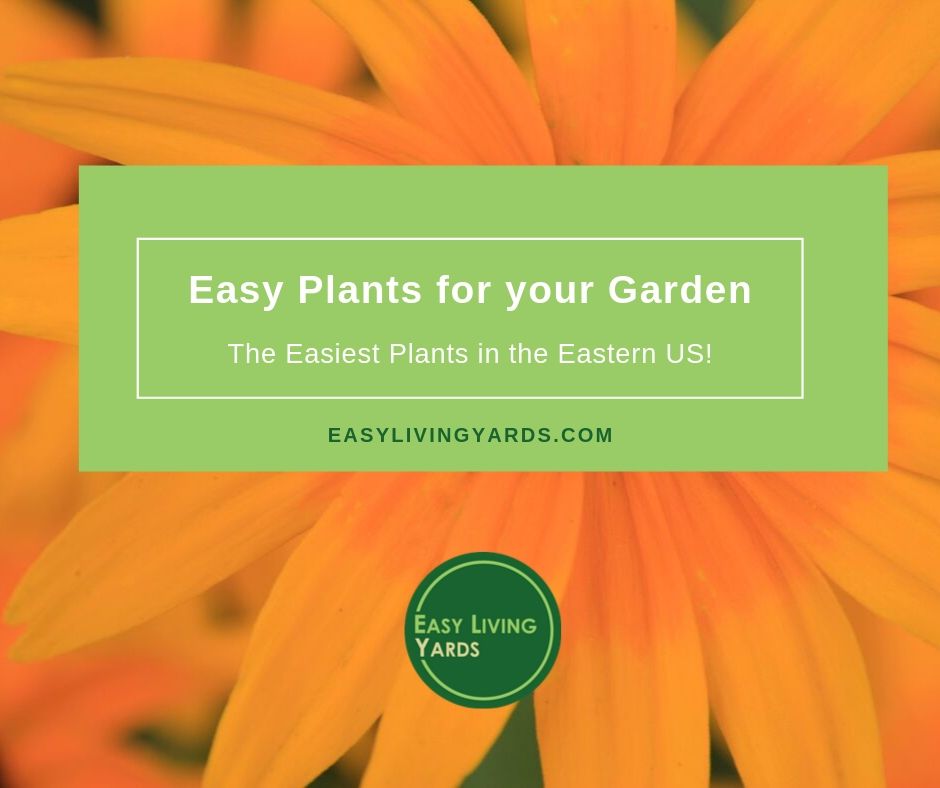
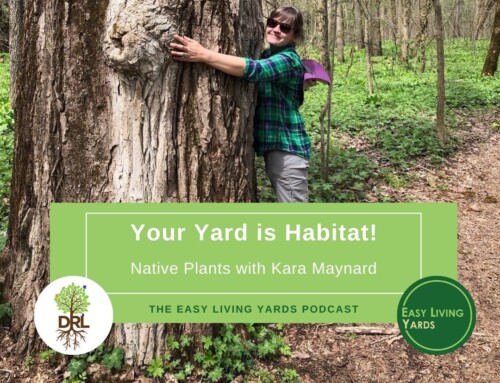


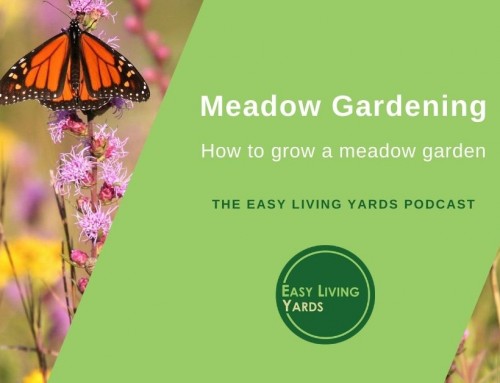
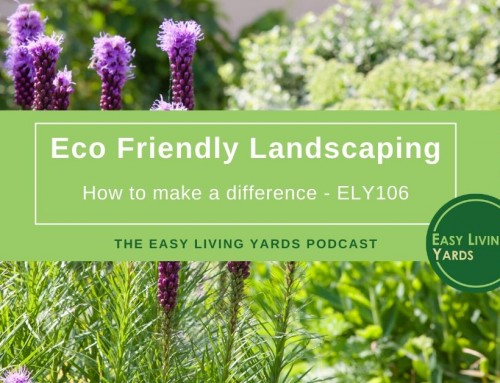
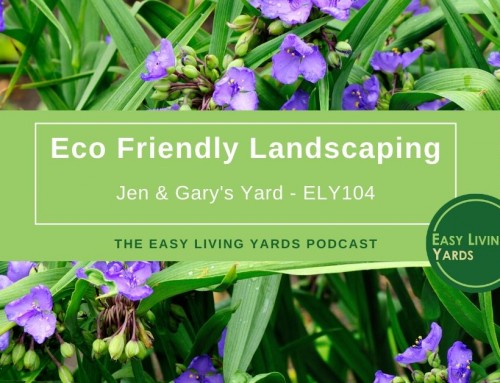
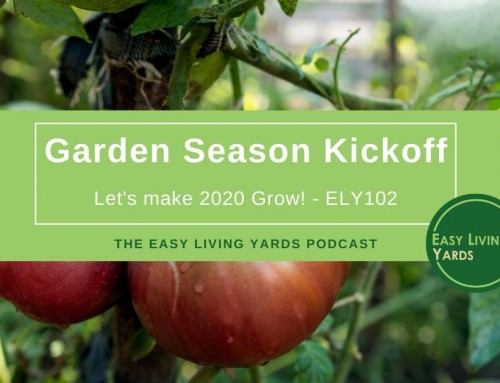

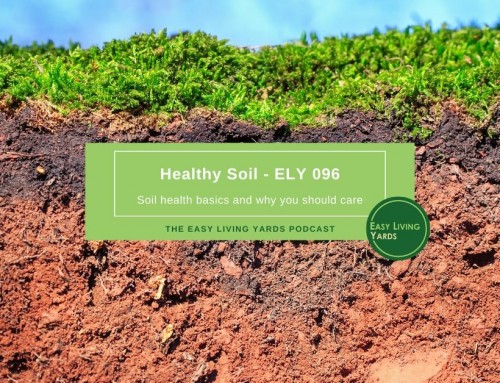
Leave A Comment